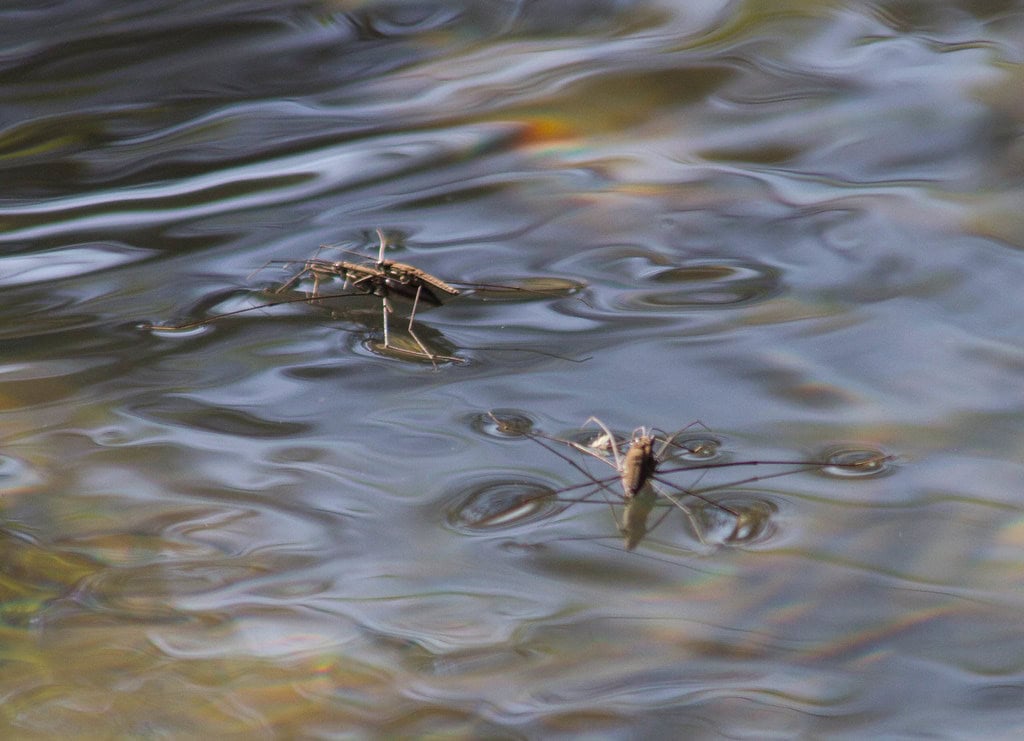In the vast animal kingdom, where elephants trumpet and lions roar, one might expect the title of “loudest creature” to belong to one of these magnificent beasts. However, nature often surprises us with its remarkable contradictions. The loudest animal on Earth relative to its body size isn’t a massive mammal with powerful lungs, but rather an insect so tiny you could easily overlook it. The water boatman (Micronecta scholtzi), specifically the male of the species, produces sounds reaching an incredible 99.2 decibels while measuring a mere 2.3 millimeters—smaller than a thumbtack. This minuscule aquatic insect demonstrates that in nature, extraordinary abilities often come in the smallest packages. Let’s dive into the fascinating world of this record-breaking creature and explore how something so tiny can make such an enormous sound.
The Tiny Champion: Introducing Micronecta scholtzi
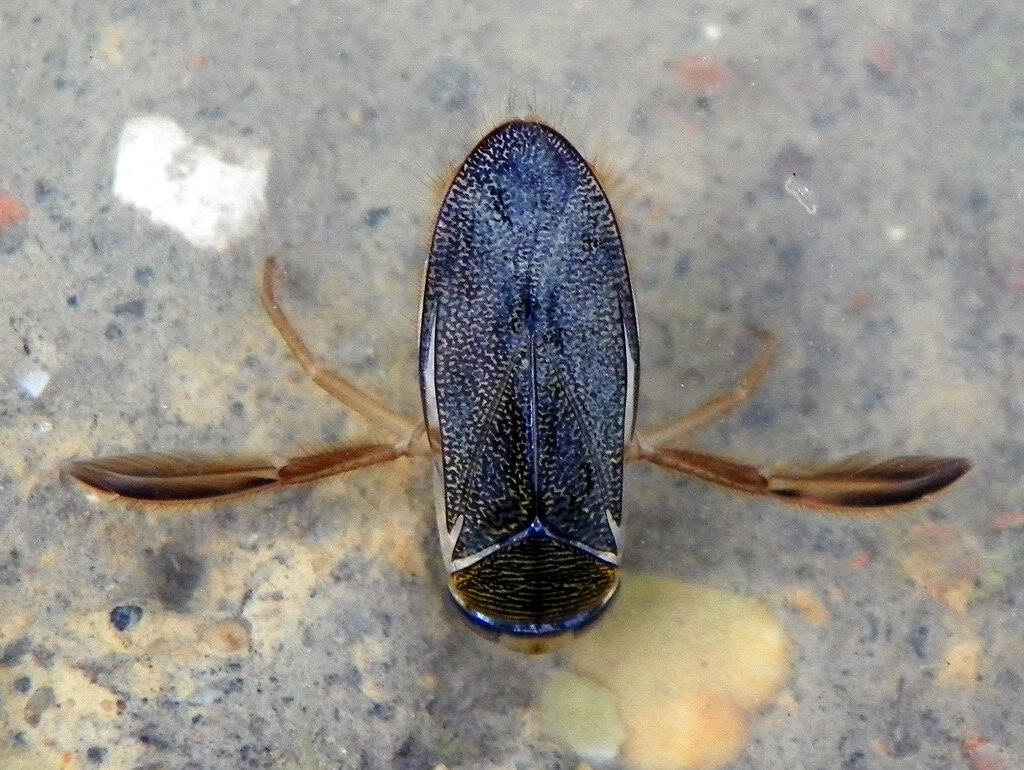
Micronecta scholtzi, commonly known as the lesser water boatman, belongs to the Corixidae family and inhabits freshwater bodies across Europe. Despite measuring just 2.3 millimeters in length—smaller than a grain of rice—this insect has earned worldwide scientific attention for its extraordinary acoustic abilities. First documented in 1898, the water boatman received relatively little attention until researchers from France and Scotland discovered its remarkable sound production capabilities in 2011. Unlike its larger relatives that swim upside down (the greater water boatmen or backswimmers), Micronecta scholtzi swims right-side up, using its paddle-like legs to navigate through ponds, lakes, and slow-moving streams. Its diminutive size allows it to occupy microhabitats where larger predators cannot reach, yet its acoustic presence extends far beyond its physical boundaries.
Breaking Sound Records: The 99.2 Decibel Achievement
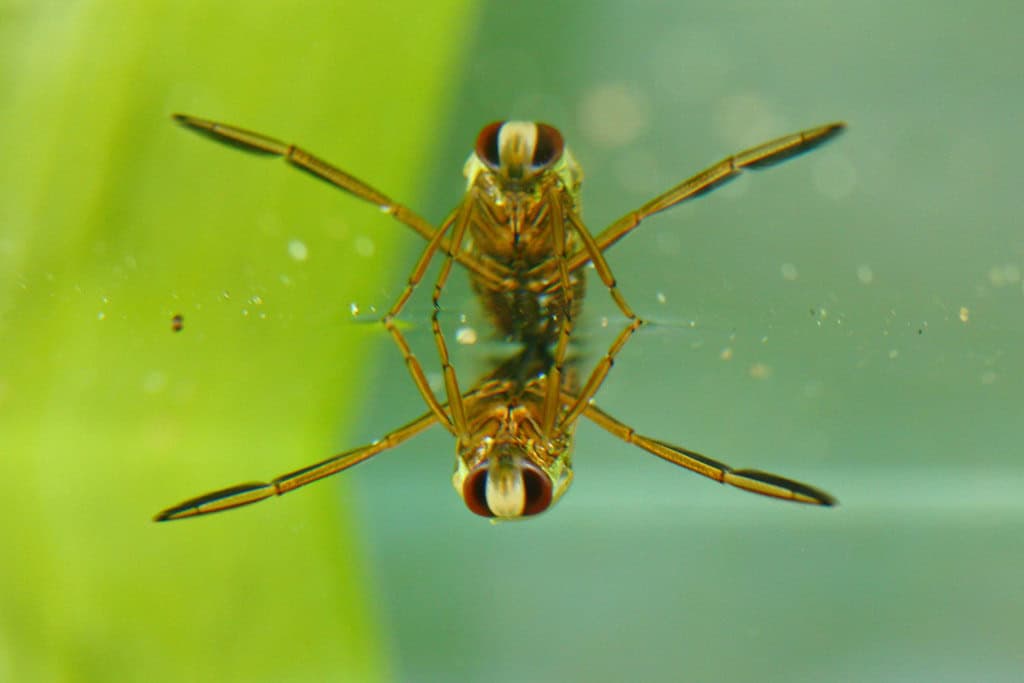
In 2011, researchers from the University of Strathclyde and the Institut de Recherche sur la Biologie de l’Insecte published their groundbreaking findings in the journal PLOS ONE, documenting that the male water boatman produces mating calls reaching 99.2 decibels. To put this in perspective, this volume is comparable to a passing subway train or a loud orchestra. However, what makes this achievement truly remarkable is the sound-to-body-size ratio.
When adjusted for body size, the water boatman produces sounds approximately 30 decibels louder than previously documented champions of proportional sound production. The researchers calculated that if humans could match this acoustic output relative to body size, our voices would be loud enough to be heard from space. This discovery shattered previous assumptions about the physical limitations of sound production in small organisms and established a new benchmark in bioacoustics research.
The Surprising Mechanics of Sound Production
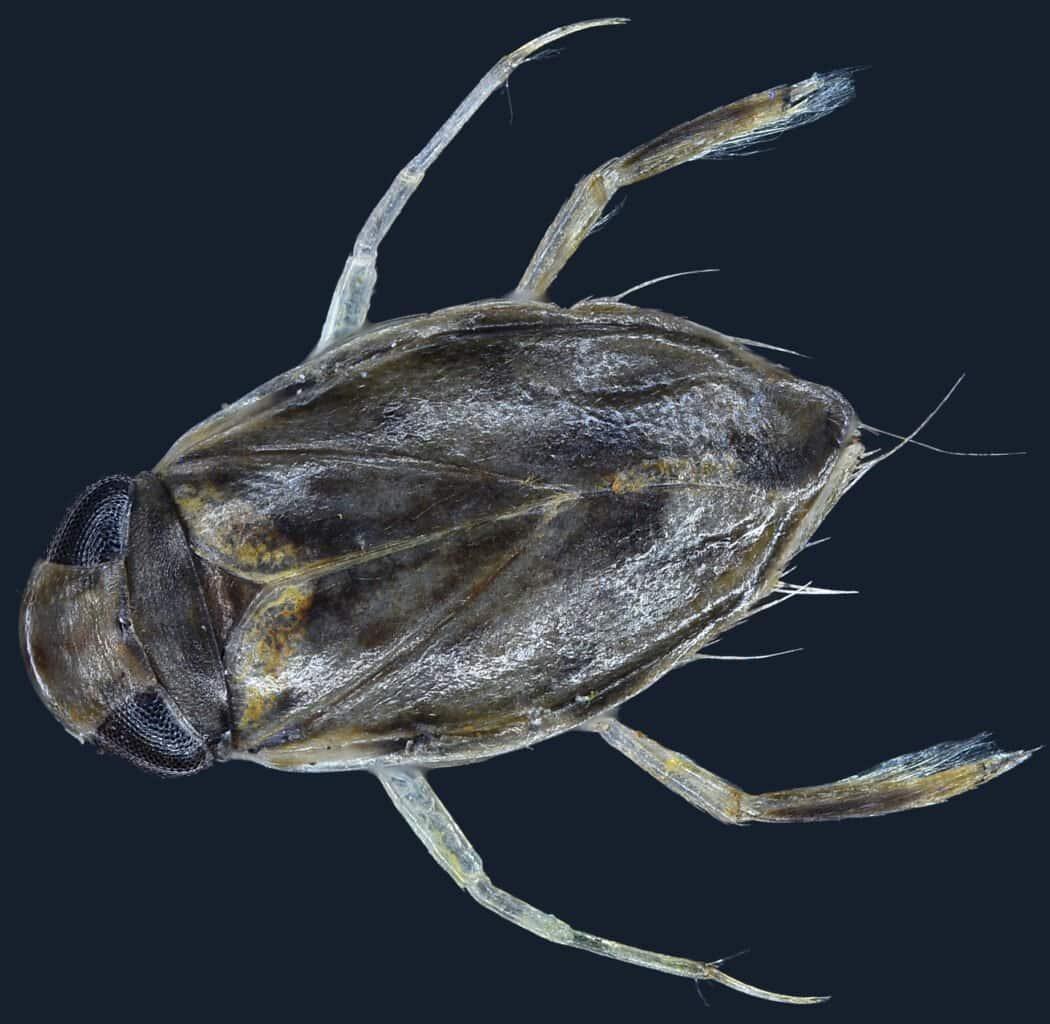
The water boatman’s extraordinary sound comes from a process called stridulation—but with a unique twist. While many insects produce sounds by rubbing body parts together, Micronecta scholtzi has developed a specialized mechanism involving its genitalia. The male insect rubs a ridged penis against its abdomen, similar to running a fingernail along the teeth of a comb. This tiny “instrument,” measuring just 50 micrometers across (about half the width of a human hair), creates vibrations that are then amplified by the insect’s abdomen, which acts as a resonance chamber.
What’s particularly fascinating is that almost 99% of the energy used in this process is lost before the sound even leaves the water. If the sound transfer were more efficient, these tiny insects would produce calls exceeding 105 decibels—a volume that would be painful to human ears. This inefficiency in sound transmission from water to air is what makes the actual 99.2-decibel achievement all the more impressive.
The Evolutionary Purpose: Love Songs Underwater

Like many of nature’s most impressive displays, the water boatman’s exceptional sound production serves a reproductive purpose. Males produce these intense sounds specifically as mating calls to attract females. In the underwater environment where visibility is often limited, acoustic signals provide an effective means of communication. The loudness likely evolved as a response to both the challenges of sound transmission underwater and intense sexual selection pressure.
Female water boatmen appear to prefer males that produce louder calls, suggesting that sound volume serves as an indicator of male fitness. This preference has driven an evolutionary arms race of sorts, with males evolving increasingly efficient sound-producing mechanisms to outcompete rivals. The extreme volume achieved by these tiny creatures demonstrates the powerful force of sexual selection in shaping seemingly impossible biological adaptations.
Living in Two Worlds: Aquatic Adaptations

Beyond its acoustic abilities, Micronecta scholtzi displays remarkable adaptations for aquatic life. Its body is streamlined and slightly flattened, reducing water resistance as it swims. The hind legs are elongated and fringed with fine hairs, effectively functioning as oars that propel the insect through water with surprising speed and agility. Unlike many aquatic insects that must periodically surface for air, water boatmen carry an air bubble beneath their wings that functions as a physical gill, allowing them to remain submerged for extended periods.
This bubble not only supplies oxygen but also plays a role in buoyancy regulation. Additionally, the water boatman possesses specialized mouthparts adapted for a primarily herbivorous diet, feeding on algae and detritus on pond bottoms. These combined adaptations make this tiny insect exquisitely suited to its freshwater habitat while simultaneously allowing it to perform its record-breaking acoustic feats.
Scientific Significance: Challenging Bioacoustic Assumptions
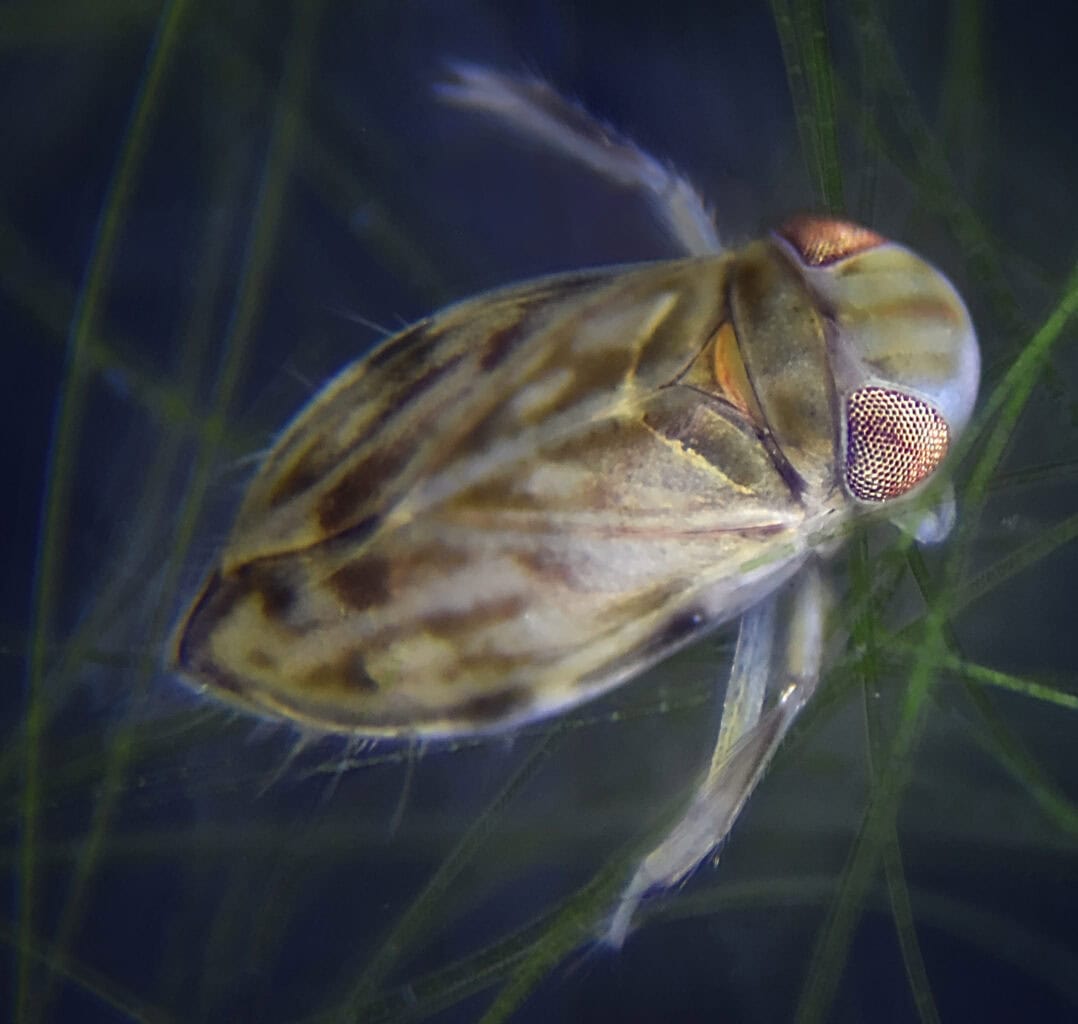
The discovery of the water boatman’s extraordinary sound production has forced scientists to reconsider fundamental principles in bioacoustics. Prior to this finding, researchers generally assumed that sound production was limited by physical constraints related to body size, particularly for aquatic organisms. The water boatman demonstrates that even with minimal sound-producing structures, remarkable amplification is possible through evolutionary specialization. This revelation has sparked new research directions in biomechanics and acoustic engineering.
Scientists are now studying the water boatman’s sound production mechanism for potential applications in miniature acoustic devices and underwater communication systems. The species serves as a powerful reminder that biological systems often find solutions that transcend apparent physical limitations, opening new possibilities for biomimetic technology development. Additionally, the water boatman case highlights how overlooked small organisms may harbor extraordinary capabilities waiting to be discovered.
Comparative Loudness: How Other Animals Measure Up

When comparing absolute volume, the water boatman is certainly not the loudest animal on Earth. That distinction belongs to the sperm whale, whose clicks can reach an astonishing 230 decibels underwater—loud enough to vibrate a human body to death at close range. The blue whale follows at approximately 188 decibels, while the howler monkey produces calls reaching 140 decibels.
Even the pistol shrimp, another surprisingly loud small creature, creates a cavitation bubble that collapses with a sound reaching 218 decibels. However, when sound production is measured relative to body size, Micronecta scholtzi stands alone. Its achievement is comparable to a human shouting at 100 decibels with a volume that would be audible from the center of a major city to its suburbs. Other notable small-but-loud contenders include the tiger moth (55-80 decibels) and certain cricket species (90 decibels), but none approach the water boatman’s impressive sound-to-size ratio.
Habitat and Distribution: Where to Find These Tiny Noisemakers
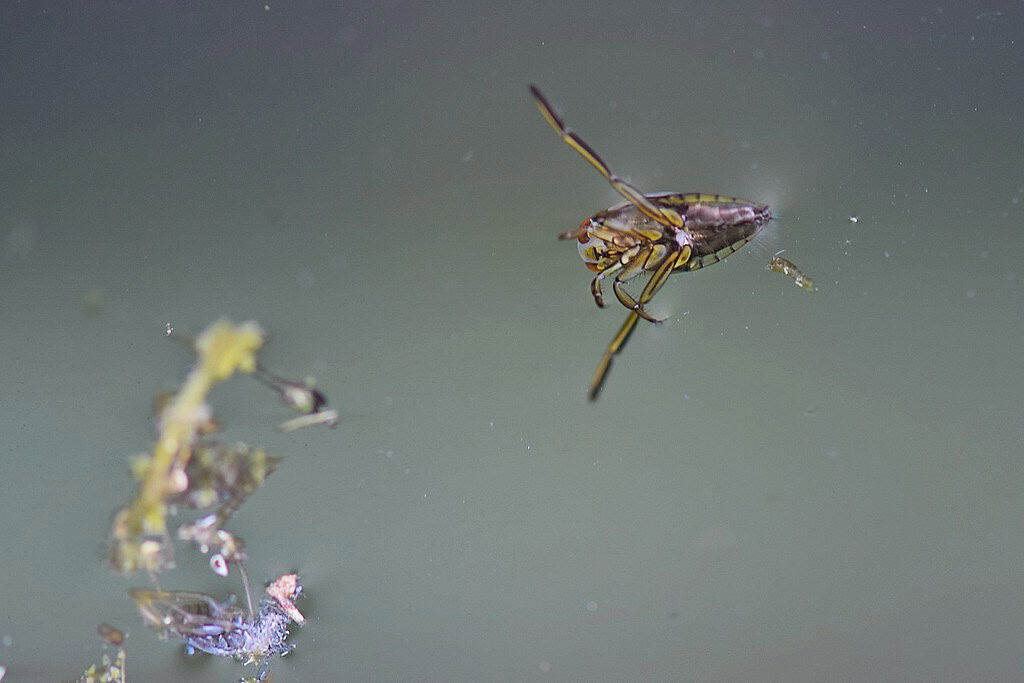
Micronecta scholtzi primarily inhabits freshwater environments across Europe, with particularly well-documented populations in France, Scotland, and Spain. These insects prefer still or slow-moving bodies of water with abundant vegetation, including ponds, lakes, slow-moving streams, and sometimes even large puddles that persist for weeks. They typically concentrate in the shallow littoral zones of these habitats, where sunlight penetrates sufficiently to support the algal growth they feed upon.
Water boatmen populations often display seasonal fluctuations, with peak numbers occurring during warm summer months when breeding activity is highest. During this period, the males’ chorus can become audible to humans standing at the water’s edge, creating what some observers describe as a “underwater cricket-like chirping.” Despite their impressive sound production, these insects remain vulnerable to habitat degradation, particularly water pollution and the drainage of small water bodies for agricultural or development purposes.
The Discovery Journey: How Scientists Found the Tiny Champion

The path to identifying the water boatman as the proportionally loudest animal involved a combination of serendipity and methodical scientific investigation. The research team, led by Dr. James Windmill from the University of Strathclyde and Dr. Jérôme Sueur from the Muséum national d’Histoire naturelle in Paris, initially set out to study various aquatic insects’ sound production. During field recordings at a pond in Paris, they were surprised by unusually loud sounds emanating from what appeared to be a virtually empty section of water.
Upon closer examination with nets and magnifying equipment, they discovered tiny water boatmen as the sound source. The team then faced significant technical challenges in accurately measuring these sounds in their natural underwater environment. They employed specialized hydrophones and developed novel recording methodologies to capture and analyze the insects’ calls. The findings underwent rigorous peer review before publication, with independent researchers verifying the extraordinary measurements. This discovery highlights the importance of studying overlooked microhabitats and organisms that might harbor surprising biological capabilities.
Conservation Status and Ecological Importance
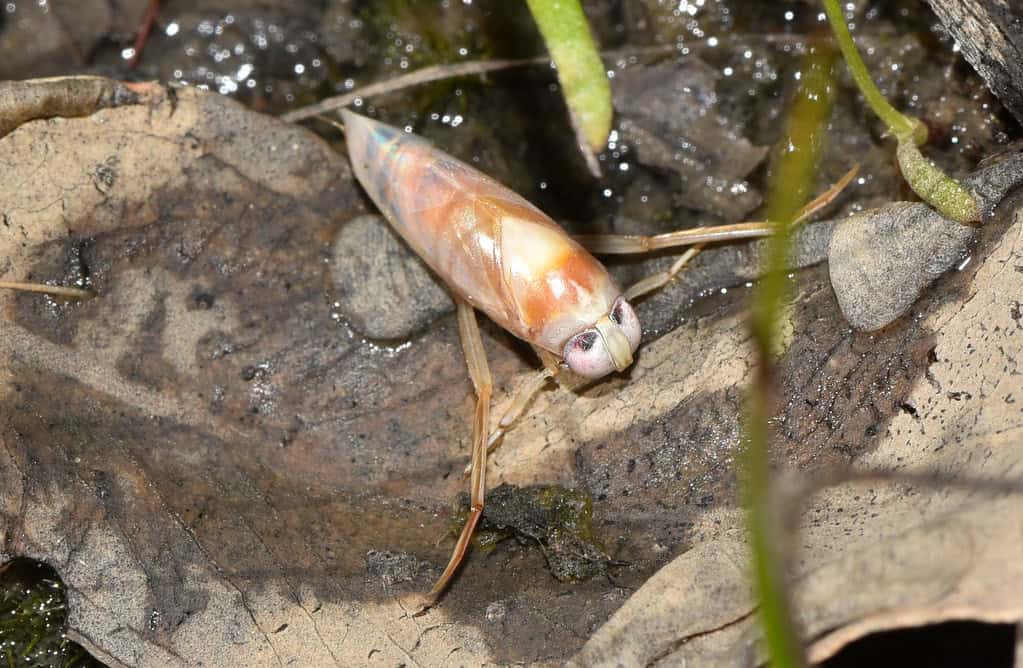
Despite its remarkable acoustic abilities, Micronecta scholtzi has not been comprehensively assessed for conservation status by major international organizations like the IUCN. This lack of assessment reflects a broader pattern where invertebrates, particularly small aquatic species, often receive less conservation attention than more charismatic fauna. Nevertheless, water boatmen play important ecological roles in freshwater ecosystems. As primary consumers of algae, they help regulate algal populations and contribute to water clarity.
They also serve as prey for various predators, including fish, amphibians, and larger aquatic insects, forming a crucial link in freshwater food webs. Their presence or absence can indicate water quality, as they tend to be sensitive to certain pollutants and habitat alterations. Conservation efforts focusing on preserving small freshwater habitats indirectly benefit water boatman populations, though more targeted research on their specific conservation needs would provide valuable ecological insights and potentially help protect these record-breaking insects for future generations.
Similar Tiny But Mighty Animals in Nature

The animal kingdom features numerous examples of small creatures with outsized abilities, demonstrating nature’s tendency to pack remarkable capabilities into compact packages. The peacock mantis shrimp, barely inches long, delivers a strike so powerful it generates cavitation bubbles that reach temperatures nearly as hot as the sun’s surface. The flea can jump to heights 150 times its body length—equivalent to a human leaping over a 30-story building. The rhinoceros beetle can lift 850 times its body weight, while certain ant species can carry objects 50 times their weight.
In the realm of sound production, the cicada produces calls reaching 120 decibels through specialized organs called tymbals, while the tiger pistol shrimp creates a cavitation bubble collapse that momentarily reaches 5,000°C (9,000°F). These examples illustrate a biological principle: smaller organisms often exhibit physical capabilities that, scaled to human size, would be impossible due to the square-cube law and other physical constraints. The water boatman’s acoustic achievement belongs to this category of disproportionate biological feats that continue to inspire scientific research and technological innovation.
Conclusion: Small Size, Enormous Impact

The water boatman’s remarkable sound production capability serves as a powerful reminder that nature’s most impressive feats often emerge from unexpected sources. This tiny insect, barely visible to the naked eye, has fundamentally changed our understanding of bioacoustics and the physical possibilities of sound generation in small organisms. Its achievement highlights how evolutionary pressures—particularly sexual selection—can drive the development of seemingly impossible adaptations that transcend apparent physical limitations.
As we continue exploring the natural world, especially at the microscopic level, we’re likely to discover many more instances where small creatures demonstrate outsized abilities. The water boatman teaches us an important lesson about scientific humility: even the smallest, most overlooked organisms may harbor extraordinary capabilities waiting to be discovered. In a world where bigger often seems better, Micronecta scholtzi stands as nature’s emphatic reminder that sometimes, the most remarkable champions come in the tiniest packages.
- The Largest Wolf Ever Recorded Was the Size of a Pony - August 22, 2025
- This Bird Has the Largest Wingspan of Any Living Creature - August 22, 2025
- The Brightest Supernova Ever Recorded Is Visible Again - August 22, 2025

